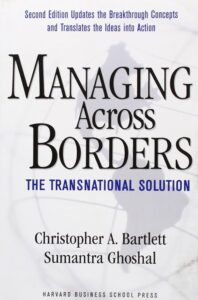Cross-Cultural Management: Essential Concepts – David C. Thomas and Mark F. Peterson
Cross-cultural management is a field that examines the differences and similarities between cultures and how they impact business interactions. This includes understanding the cultural values, beliefs, communication styles, and behaviors of different groups. It is essential for managers to have a basic understanding of cross-cultural management in today’s diverse global business environment.
David C. Thomas and Mark F. Peterson are renowned experts in the field of cross-cultural management and have made significant contributions through their research and publications. Thomas is a Professor Emeritus of International Business at Simon Fraser University in Canada and Peterson is the Marvin Bower Professor of Leadership Development Emeritus at Harvard Business School. Both have extensive experience working with multinational corporations and have studied the impact of cultural differences on organizational behavior and leadership.
One of their notable contributions is the development of the five essential dimensions of cross-cultural management. These dimensions, also known as the five Rs, include:
1. Recognize: The first step in managing cultural differences is to recognize that they exist and can impact business interactions. This involves acknowledging and understanding the cultural values, beliefs, and behaviors of people from different backgrounds.
2. Respect: Respecting cultural differences means appreciating and valuing the unique perspectives and practices of different cultures. This includes being open-minded and avoiding ethnocentric views.
3. Reconcile: When working with individuals from different cultures, conflicts may arise due to differences in values or expectations. Reconciling these conflicts requires actively listening, seeking common ground, and finding mutually beneficial solutions.
4. Realize: Cultural intelligence, or the ability to adapt to different cultures, is essential for successful cross-cultural management. This involves understanding and adapting to cultural norms, communication styles, and behaviors to effectively work with diverse individuals.
5. Respond: The final step in cross-cultural management is to respond appropriately to different cultural contexts. This includes being aware of potential misunderstandings or cultural faux pas and adjusting behaviors accordingly.
Thomas and Peterson’s five dimensions provide a comprehensive framework for understanding and managing cultural differences in business settings. Their research has also highlighted the importance of cultural competency for leaders and the role of diversity and inclusion in organizations.
In conclusion, the work of David C. Thomas and Mark F. Peterson has been instrumental in advancing the field of cross-cultural management. Their essential dimensions provide a practical guide for managers to effectively navigate cultural differences and promote inclusive and successful business interactions. As the global market continues to expand, understanding and applying these concepts will be crucial for sustainable business success.



